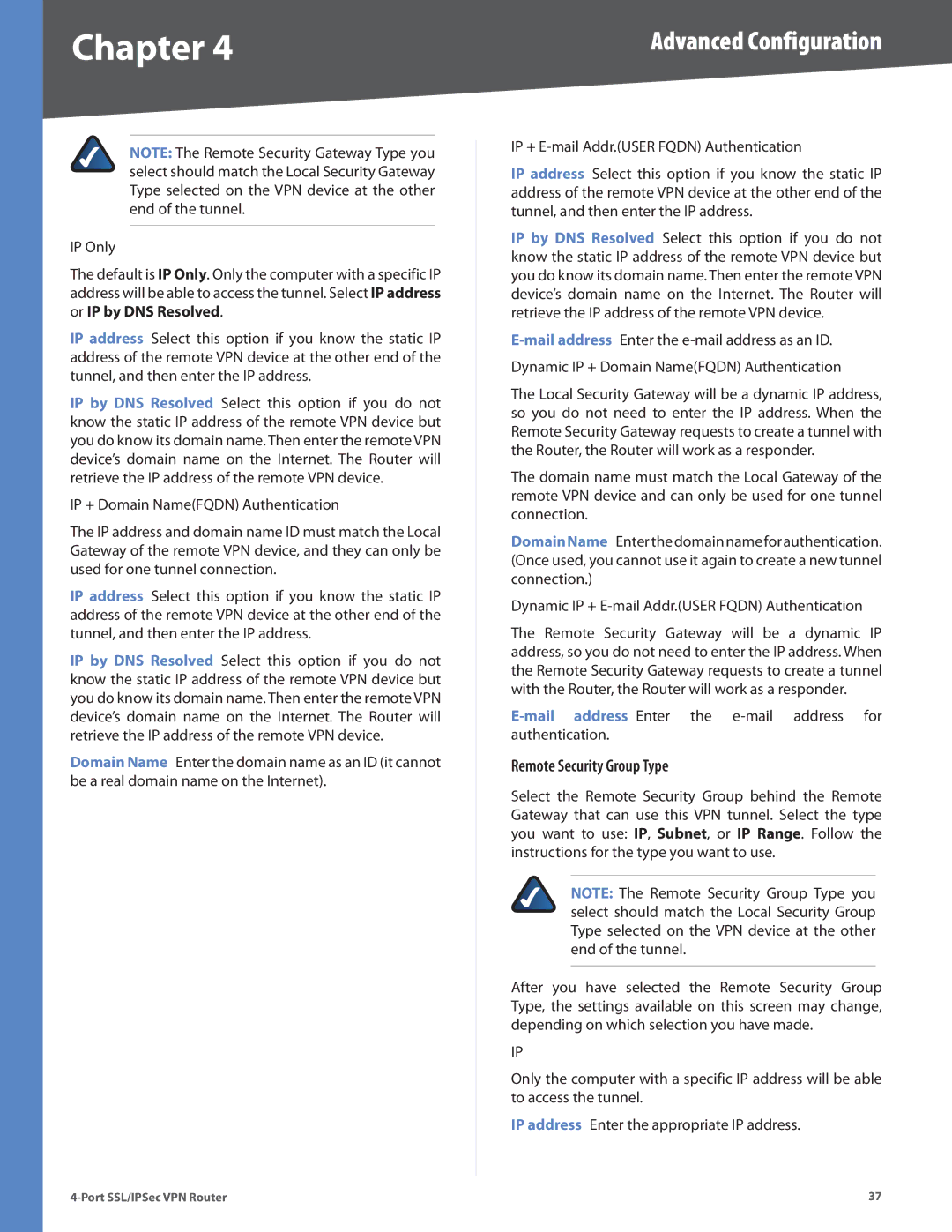
Chapter 4 | Advanced Configuration |
NOTE: The Remote Security Gateway Type you select should match the Local Security Gateway Type selected on the VPN device at the other end of the tunnel.
IP Only
The default is IP Only. Only the computer with a specific IP address will be able to access the tunnel. Select IP address or IP by DNS Resolved.
IP address Select this option if you know the static IP address of the remote VPN device at the other end of the tunnel, and then enter the IP address.
IP by DNS Resolved Select this option if you do not know the static IP address of the remote VPN device but you do know its domain name. Then enter the remote VPN device’s domain name on the Internet. The Router will retrieve the IP address of the remote VPN device.
IP + Domain Name(FQDN) Authentication
The IP address and domain name ID must match the Local Gateway of the remote VPN device, and they can only be used for one tunnel connection.
IP address Select this option if you know the static IP address of the remote VPN device at the other end of the tunnel, and then enter the IP address.
IP by DNS Resolved Select this option if you do not know the static IP address of the remote VPN device but you do know its domain name. Then enter the remote VPN device’s domain name on the Internet. The Router will retrieve the IP address of the remote VPN device.
Domain Name Enter the domain name as an ID (it cannot be a real domain name on the Internet).
IP +
IP address Select this option if you know the static IP address of the remote VPN device at the other end of the tunnel, and then enter the IP address.
IP by DNS Resolved Select this option if you do not know the static IP address of the remote VPN device but you do know its domain name. Then enter the remote VPN device’s domain name on the Internet. The Router will retrieve the IP address of the remote VPN device.
The Local Security Gateway will be a dynamic IP address, so you do not need to enter the IP address. When the Remote Security Gateway requests to create a tunnel with the Router, the Router will work as a responder.
The domain name must match the Local Gateway of the remote VPN device and can only be used for one tunnel connection.
DomainName Enterthedomainnameforauthentication. (Once used, you cannot use it again to create a new tunnel connection.)
Dynamic IP +
The Remote Security Gateway will be a dynamic IP address, so you do not need to enter the IP address. When the Remote Security Gateway requests to create a tunnel with the Router, the Router will work as a responder.
Remote Security Group Type
Select the Remote Security Group behind the Remote Gateway that can use this VPN tunnel. Select the type you want to use: IP, Subnet, or IP Range. Follow the instructions for the type you want to use.
NOTE: The Remote Security Group Type you select should match the Local Security Group Type selected on the VPN device at the other end of the tunnel.
After you have selected the Remote Security Group Type, the settings available on this screen may change, depending on which selection you have made.
IP
Only the computer with a specific IP address will be able to access the tunnel.
IP address Enter the appropriate IP address.
37 |
